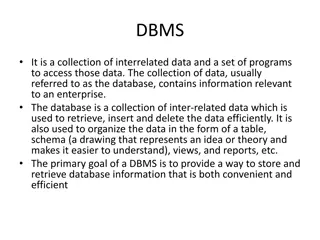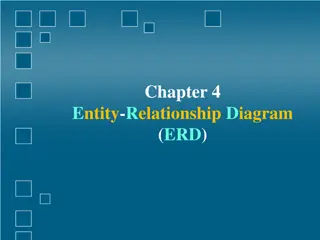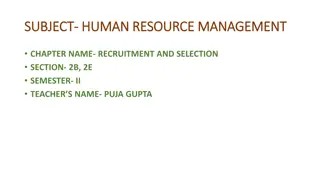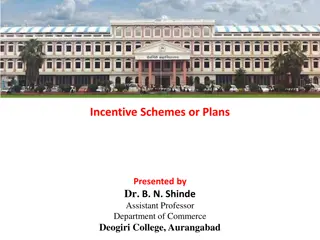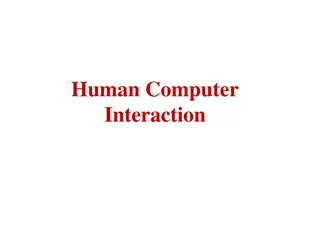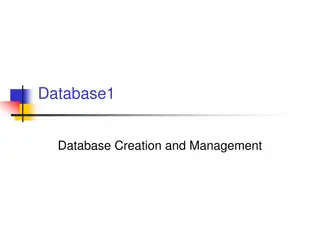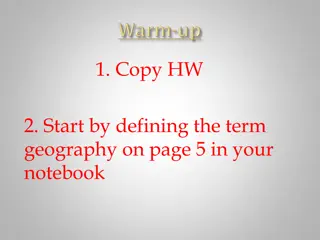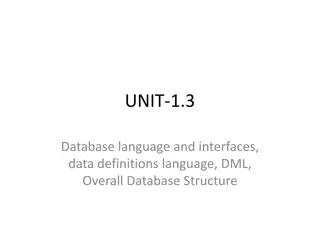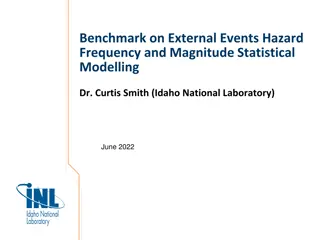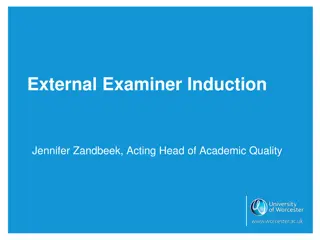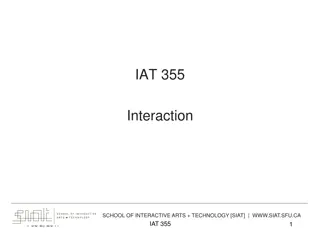Database System Interaction with Human Workers and External Sources
Explore the intersection of database systems with human workers, resolving disagreements in opinions, enabling external sources usage, and efficient query processing. The content covers schema design, relational models, data management, and more to optimize interactions between structured data and human input.
Download Presentation

Please find below an Image/Link to download the presentation.
The content on the website is provided AS IS for your information and personal use only. It may not be sold, licensed, or shared on other websites without obtaining consent from the author.If you encounter any issues during the download, it is possible that the publisher has removed the file from their server.
You are allowed to download the files provided on this website for personal or commercial use, subject to the condition that they are used lawfully. All files are the property of their respective owners.
The content on the website is provided AS IS for your information and personal use only. It may not be sold, licensed, or shared on other websites without obtaining consent from the author.
E N D
Presentation Transcript
Overview Running Examples Data Model Query Language Query Processing System Architecture Experiments
Conventional data management, incorporate human computation . Declarative queries DBMS like thing DBMS like thing Web
Resolve disagreeing human opinions. How does database system interact with human workers? How to enable usage of external sources in addition to crowd? Right data model and query language. Materialization of crowdsourced data. Efficient query processor.
Restaurant(name, address, rating, cuisine) AddInfo(address, city, zip)
Schema designer relations and other stuff End user relations Conceptual Schema automatic (system) Raw Schema DBMS DBMS
Relations Like Restaurant and AddrInfo. Partitioning of attributes in conceptual relation Anchor attributes (Identifier). Dependent attribute-groups (Property). Fetch rules How to obtain data from external sources including humans. Resolution rules Reconcile inconsistent or uncertain values.
Tables actually stored in DBMS. For each relation R in the conceptual schema: One anchor table whose attributes are the anchor attributes of R One dependent table for each dependent attribute- group D in R, containing the attributes in the resolution rule for D.
Fetch-Resolve-Join Sequence is a logical concept. May interleave. No materialization for conceptual data.
Restaurant(name, address, rating, cuisine) AddrInfo(address, city, zip) Enclose dependent attribute-groups Restaurant(name, address, [rating], [cuisine]) AddrInfo(address, [city, zip])
1. A D : f where A is a subset of the anchor attributes (A A) and D is a dependent attribute-group. function f cleans the set of dependent values associated with specific anchor values, when the dependent values may be inconsistent or uncertain. 2. ? A : f where A is the set of anchor attributes. function f cleans a set of anchor (A) values.
A fetch rule takes the following form: where A1 and A2 are sets of attributes from one relation and P is a fetch procedure that implements access to human workers or other external sources. A1 A2 : P
Recap: One anchor table One dependent table for each dependent attribute- group. RestA(name,address) RestD1(name,address,rating) RestD2(name,cuisine) AddrA(address) AddrD1(address,city,zip)
Starting with the current contents of the raw tables and logically performing: Fetch: add tuples to Deco tables. Resolve: resolve dependent attributes. Join: full outerjoin of Deco tables for each relation. Resulting in a set of data for the conceptual relations. Logical steps, not necessarily perform, not necessarily in order.
Extra column in the raw tables. Not first-class of data model, but crucial for some crowdsourcing applications. Deal with messy aspects of using crowdsourced data. Examples: Data expiration Worker quality Voting Confidence scores Etc.
A Deco query Q is a relational query over the conceptual relations. The answer to Q is the result of evaluating Q over some valid instance of the database. Empty! Empty! At AtLeast Least 5 5 At least 5 tuples of non-NULL attributes will return.
Push-Pull Hybrid Execution Model Incremental Push Borrow ideas from incremental view maintenance. Result of a fetch rule -> update to one/more base tables -> propagated to view (conceptual table). Asynchronous Pull Borrow ideas from asynchronous iteration. Initiate multiple new fetches in parallel and feed more tuples back to plan ASAP. Two Phase Materialization Accretion Materialization: try to answer using raw tables. Accretion: Issues fetch rules to obtain more results.
County(name, [language], [capital]) County(name, [language], [capital])
County(name, [language], [capital]) County(name, [language], [capital])
Plan Down Push all predicates down as much as possible Similar to reverse fetch query plan. Plan Up Predicate pull-up transformation. Similar to filter later query plan.




